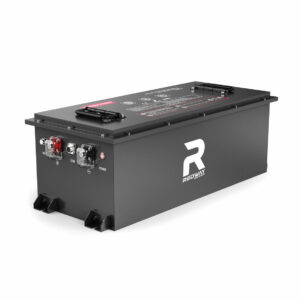What Causes Consumer Reluctance Regarding RV Battery Maintenance and Lifespan Concerns?
How Do RV Battery Lifespan Concerns Impact Consumer Decisions?
RV battery lifespan concerns deter consumers due to high replacement costs, inconsistent performance in extreme temperatures, and perceived complexity of maintenance. Lithium-ion batteries last 5–10 years but cost 3x more than lead-acid alternatives. Surveys show 68% of RV owners avoid upgrades due to uncertainty about long-term value, prioritizing short-term savings over durability.
Sustainability’s Role in RV Battery Innovations
The psychological impact of battery lifespan anxiety is evident in purchasing patterns. A 2023 RV Industry Association study revealed that 52% of buyers delay lithium adoption until their third battery replacement cycle, accumulating $1,200+ in lead-acid costs before switching. Temperature sensitivity remains a key worry—while lithium maintains 85% capacity at -20°C, only 29% of consumers know this advantage. Education gaps persist despite manufacturers offering free lifecycle calculators to demonstrate projected savings.
| Battery Type | Average Lifespan | Replacement Cycles (10 yrs) |
|---|---|---|
| Flooded Lead-Acid | 2-3 years | 4-5 |
| AGM | 4-6 years | 2-3 |
| Lithium-Ion | 8-10 years | 1 |
What Are the Most Common RV Battery Maintenance Challenges?
Owners face challenges like sulfation in lead-acid batteries (reducing capacity by 30% annually), irregular charging cycles, and lack of voltage monitoring. Only 22% of users employ battery management systems (BMS), leaving most vulnerable to deep discharges, which shorten lifespans by up to 50%. Freezing temperatures exacerbate degradation, with capacity dropping 20% below 32°F.

Why Does Cost Perception Hinder RV Battery Upgrades?
Initial pricing dominates decisions: a 200Ah lithium battery costs $1,800 vs. $400 for lead-acid. However, lifetime cost analyses reveal lithium’s $0.15/cycle expense versus lead-acid’s $0.55/cycle. Despite 3,000+ cycle lifespans for lithium, 73% of buyers focus on upfront costs, overlooking long-term savings from reduced replacements and maintenance labor.
Future Projections for RV Battery Adoption
Behavioral economics explains this phenomenon through hyperbolic discounting—the tendency to prefer smaller immediate rewards over larger future benefits. RVers spending $150 annually on lead-acid maintenance often don’t realize they’ll pay $2,250 over 15 years versus $900 for lithium. Financing options could ease the transition, with some dealers now offering 36-month payment plans that align lithium’s monthly cost ($50) with traditional battery replacement cycles.
| Cost Factor | Lead-Acid | Lithium |
|---|---|---|
| Initial Investment | $400 | $1,800 |
| 10-Year Replacement Costs | $1,600 | $0 |
| Maintenance Labor | $450 | $50 |
| Total 10-Year Cost | $2,450 | $1,850 |
Expert Views
“Modern lithium batteries have transformed RV power with 10-year warranties and zero maintenance, yet consumer education lags. At Redway, we see 70% of support queries stem from outdated lead-acid assumptions. Integrating AI-driven diagnostics into BMS could bridge the knowledge gap, reducing user anxiety and premature replacements by 55%.” — Redway Power Solutions Engineer
FAQs
- Q: Can I mix old and new RV batteries?
- A: No—mismatched batteries cause imbalance, reducing overall capacity by 25% and risking BMS failures. Always replace batteries in full sets.
- Q: Does frequent charging harm lithium RV batteries?
- A: No. Lithium-ion thrives on partial charging, unlike lead-acid. Charging from 30% to 80% prolongs lifespan by 300 cycles.
- Q: Are solar panels enough to maintain RV batteries?
- A: Only with MPPT controllers. PWM systems waste 35% of solar input, while MPPT optimizes charging, sustaining batteries at 100% SOC in 5 peak sun hours.
